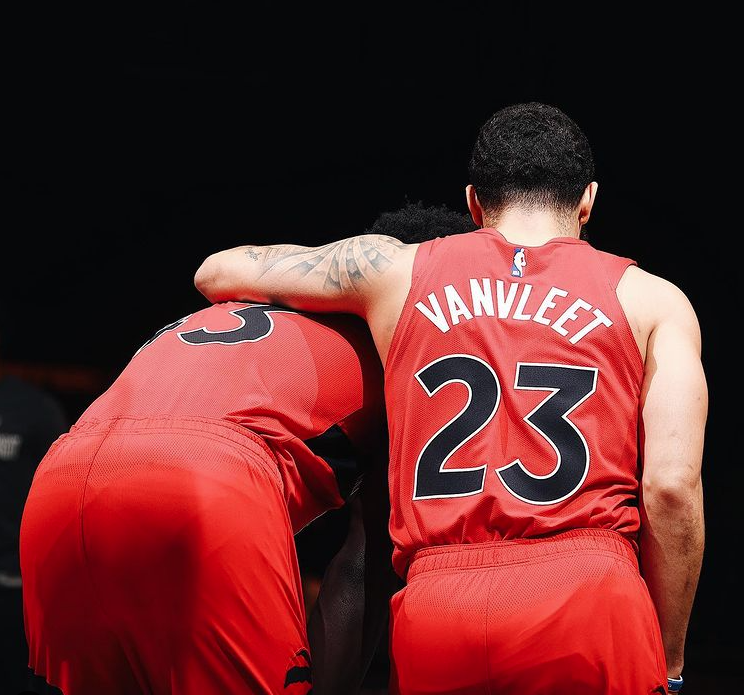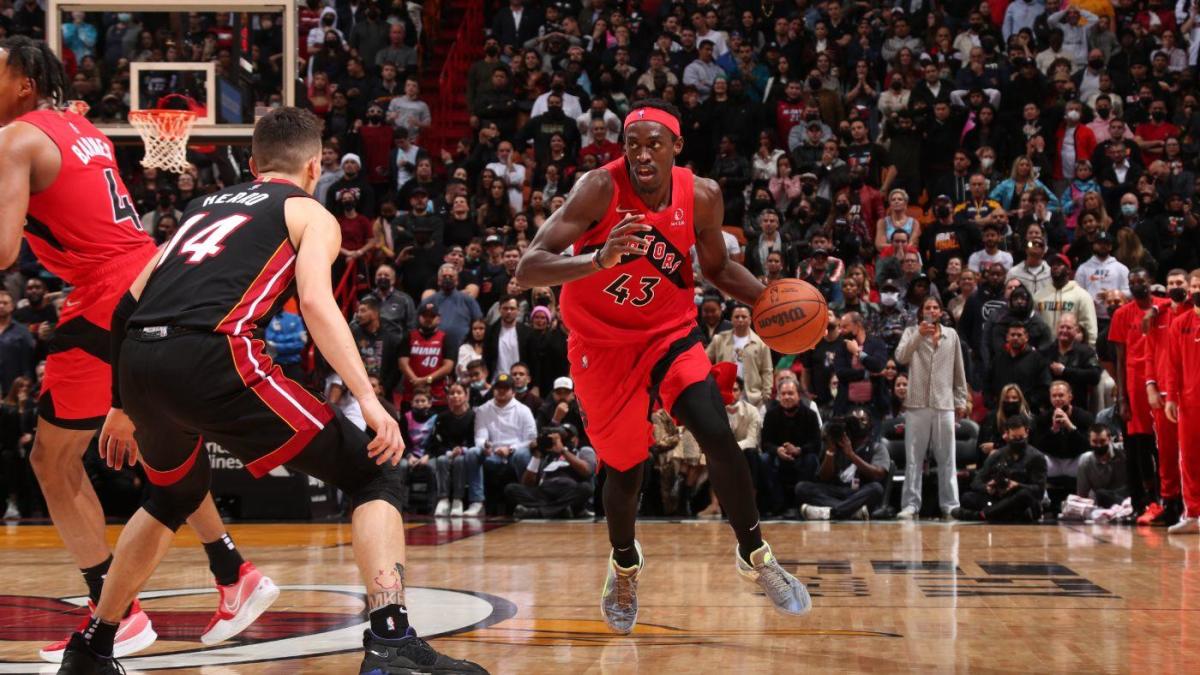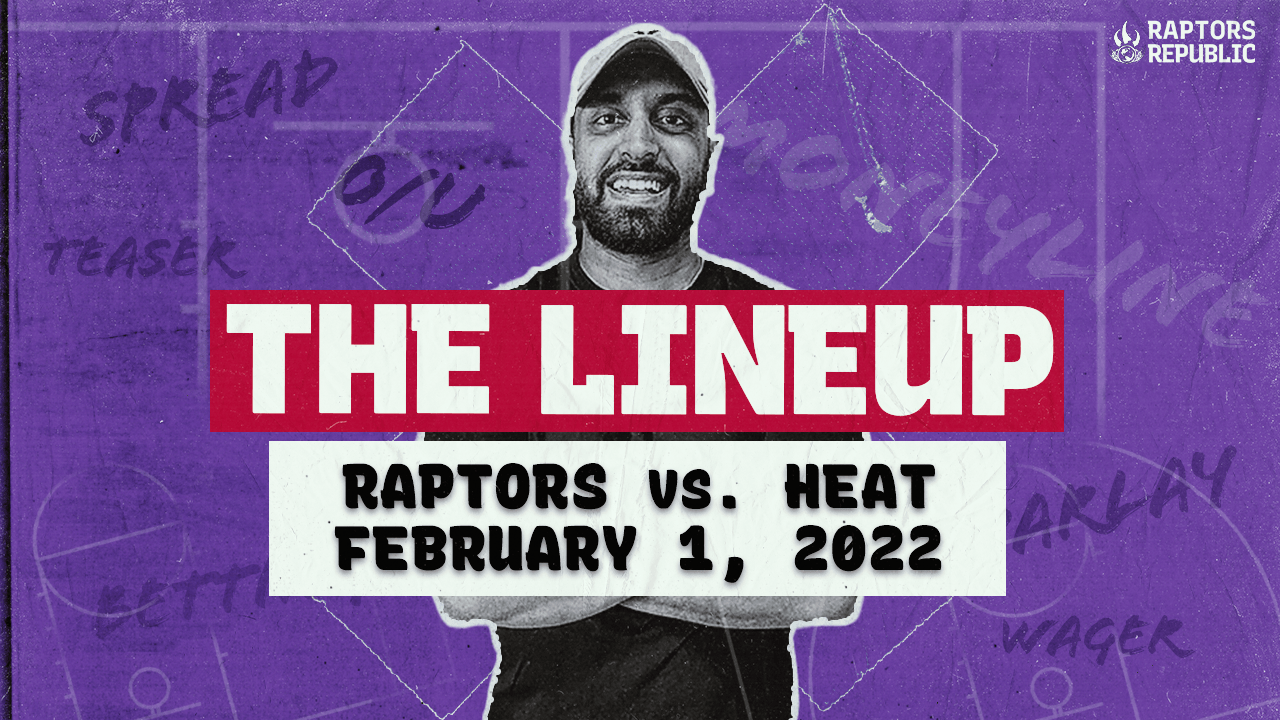One benefit of lacking a Kawhi Leonard-type initiator is that opponents never know from what direction the final punch is going to be thrown. And against the Atlanta Hawks, the Toronto Raptors used that advantage to perfection. Translation: the Raptors don’t have one closer; they have five.
Toronto can open plays in a variety of ways. Some rough estimates: the Raptors ran perhaps 10 pick and rolls with Fred VanVleet handling and Pascal Siakam screening. They ran, let’s say, half as many with Siakam handling and VanVleet screening. Still a sizeable number. Scottie Barnes and Chris Boucher set plenty of picks for VanVleet. Siakam and Gary Trent jr. hooked up as well, with Trent getting (as far as I saw) all the handling duties there. Siakam, Barnes, and OG Anunoby all took their turns dancing with one another. The point is there were a variety of options. Yet it’s not a my turn-your turn situation; Toronto actually created advantages by rotating the point of attack from player to player.
Early in the first quarter, Toronto’s offense eventually cycled into an Trent and Siakam action when all else broke down. Siakam popped into an open catch-and-shoot triple, which he drilled — not such a bad late-clock option at all.
Moments later, Siakam — once again the screener — drew so much attention from Atlanta’s defense (after having scored as a screener previously) that no one stepped up to VanVleet, who scored on a picturesque moonball finger roll.
When Siakam dribbled and VanVleet set screens, Siakam at the very least got downhill, but generally created a whole lot more than that. During Toronto’s momentous third quarter, Siakam saw VanVleet’s defender trying to tag and recover, so he beat him to the corner and drove, sucking in the defense, and swinging to the weakside to the now-open VanVleet. VanVleet, who shot 4 of 10 from deep in the game, drew the defender from the corner, leaving Trent wide open for three. Extremely intelligent basketball that used everyone’s skillset who was involved in the play.
When, moments later, Atlanta tried the same defense against a Siakam-VanVleet pick and roll with an empty strong side, Siakam identified it. He beat VanVleet’s original defender to the corner and waited for the recovery, for his original defender to jump back to him. Right at the exact moment of transition, when he was unguarded by either, he calmly knocked down the free-throw-line pullup. A near-brilliant recognition of a team’s preferred pick-and-roll defense, analyzing on the spot what they were going to do, what worked last time, how they would adapt, and what to do to beat the change.
Even when Toronto couldn’t force a switch or create an advantage with the Siakam-VanVleet arrangement, Siakam was so potent with the ball that it hardly mattered. This season, he’s back to shooting above 70 percent at the rim for the first time since 2018-19. His touch on floaters, hooks, extended layups, runners, and the like is immaculate, and no matter the amount of contact or contest, it’s a fair bet he’s gonna toss the ball in when he hits the deep paint.
To ice the game, Toronto turned to two VanVleet-Siakam pick and rolls. On one, VanVleet attacked a drop defense, saw the strongside corner defender fall asleep, and hit Anunoby for a corner triple. Later, he attacked a switch, hit the paint, drew the weakside corner defender, and hit Anunoby for a corner triple. That second piece of artistry came with 30 seconds left in a one-point game, mind you. VanVleet finished with 11 assists (and only one turnover) — none more important or more impressive than that.
Such plays built on one another; it was logical that one followed the other chronologically. After Siakam established his jumper, his pick-and-roll handler was able to score with Siakam screening because the defensive attention he drew shifted. After Siakam shredded the pick-and-roll defense he saw by kicking to the weakside, he was able to pull up for an easy jumper because the defense shaded to that side of the court. After VanVleet attacked a drop to create a strongside corner triple, he attacked a different defense to create a triple in a different corner. Toronto dissected and learned what it was facing, continually evolving how it attacked Atlanta’s — also continually evolving — defense. That’s why people call halfcourt offensive battles chess matches: the call-and-response elements that result from games played in linear time, with both teams adapting to what they see from their opponents, reflect the changes chess masters make between games, identifying opposing opening preferences and trying to wrestle the steering wheel from one another.
That’s the benefit of Toronto having so many players who can initiate the ball, set screens, or spot up around the play. Any of Toronto’s five starters are capable of playing either role, meaning in theory Toronto has dozens of possible handler-screener arrangements. They didn’t turn to every possible setup, but they sure got far down the list. And they did so purposefully, intentionally, adapting to what was happening on the court previously.
Okay, caveats. The Hawks were of course without Trae Young, perhaps the preeminent pick-and-roll operator in today’s NBA. And there were facets of Toronto’s attack that were less than successful. Barnes especially could get little going, either as a screener or handler. And though Anunoby was effective as a catch-and-shoot shooter orbiting pick and rolls, he wasn’t as effective when involved as the handler or screener himself. He’s usually much better as the screener, but in this one I didn’t really notice him being used there. His skills were best applied elsewhere.
Anunoby and Barnes’ ineffectiveness in pick and rolls can be seen through a positive lens. The Raptors’ best orientation involves VanVleet and Siakam as the primaries in plays, either handling and either screening. That proved true against Atlanta, and it’s been true all season. VanVleet is Toronto’s only real point guard and its best creator, and Siakam has emerged as a deadly force as a roller this season. The rest of Toronto’s key guys had to find other ways to be useful against Atlanta. And, critically, they did: Barnes continually beat Atlanta’s bigs down the court, especially in the first half, sealing under the rim and finding easy points or at least forcing switches and chaos. Anunoby’s off-ball spacing, shooting three of five from deep in the game, was a hinge upon which the success of VanVleet and Siakam swung. Yet plenty of backup plans short-circuited. That won’t always be the case.
Toronto has plenty of options, more than opponents can possibly plan for (in the regular season). It didn’t need them all against a Hawks team riding a seven-game winning streak. Eventually, it will need all of them. Good thing the Raptors have so many different contingency plans. One ought always to be available when another short circuits.




